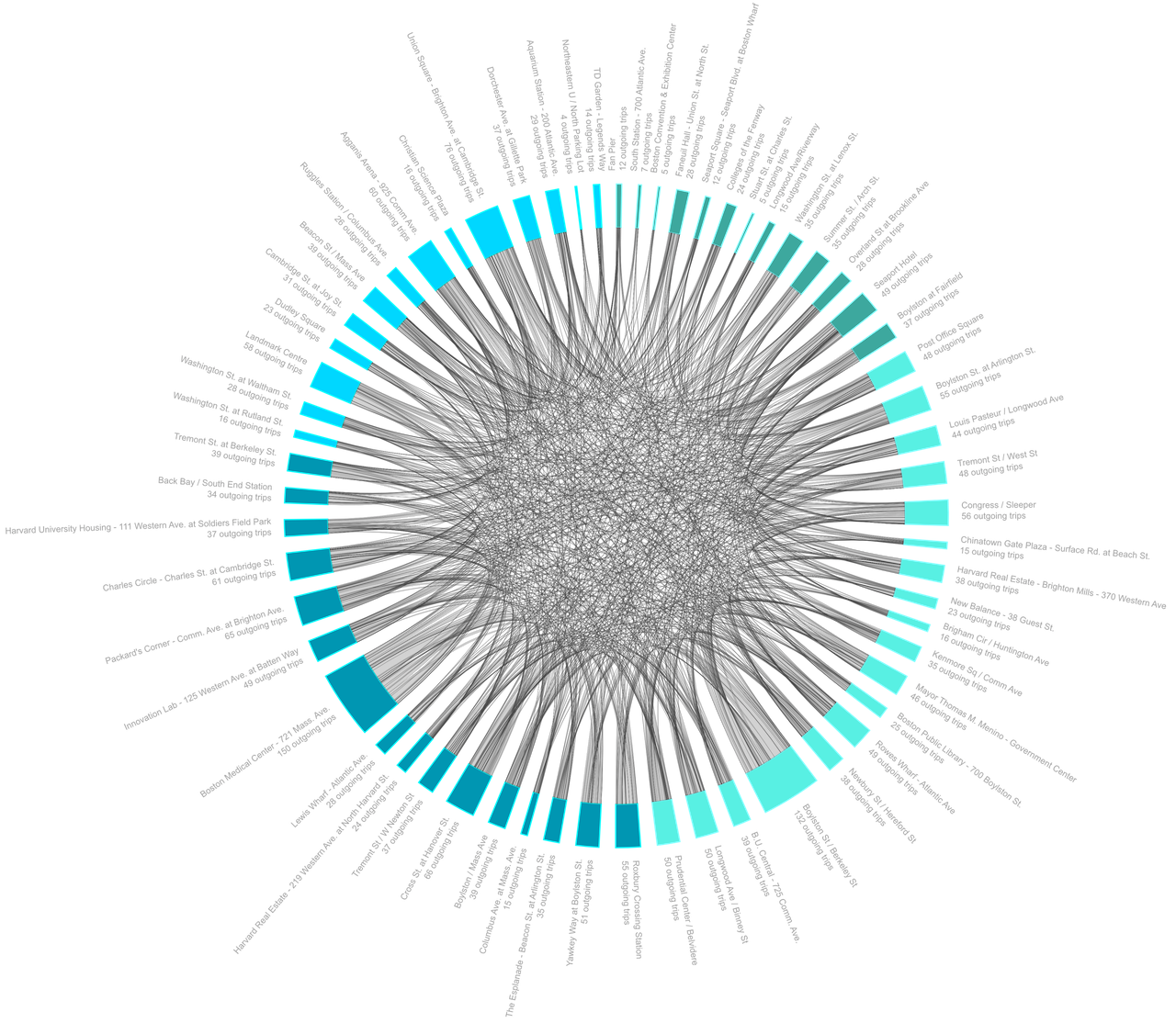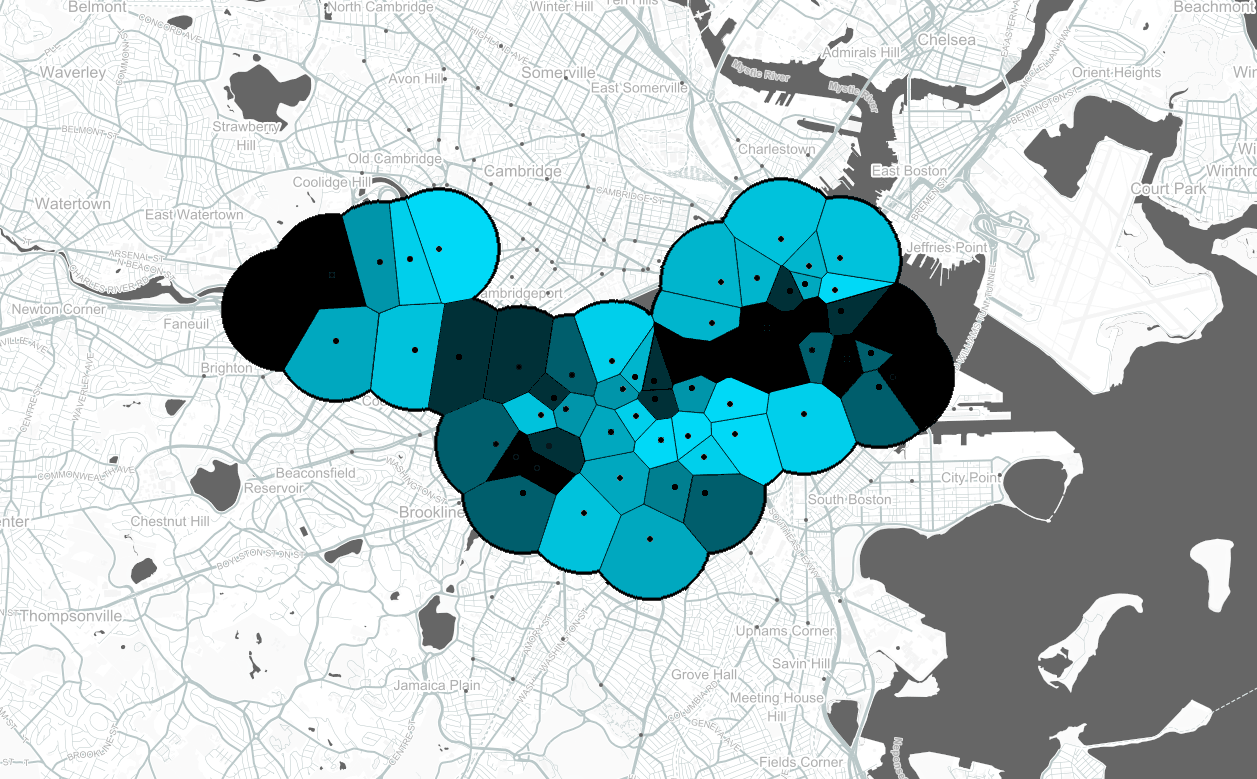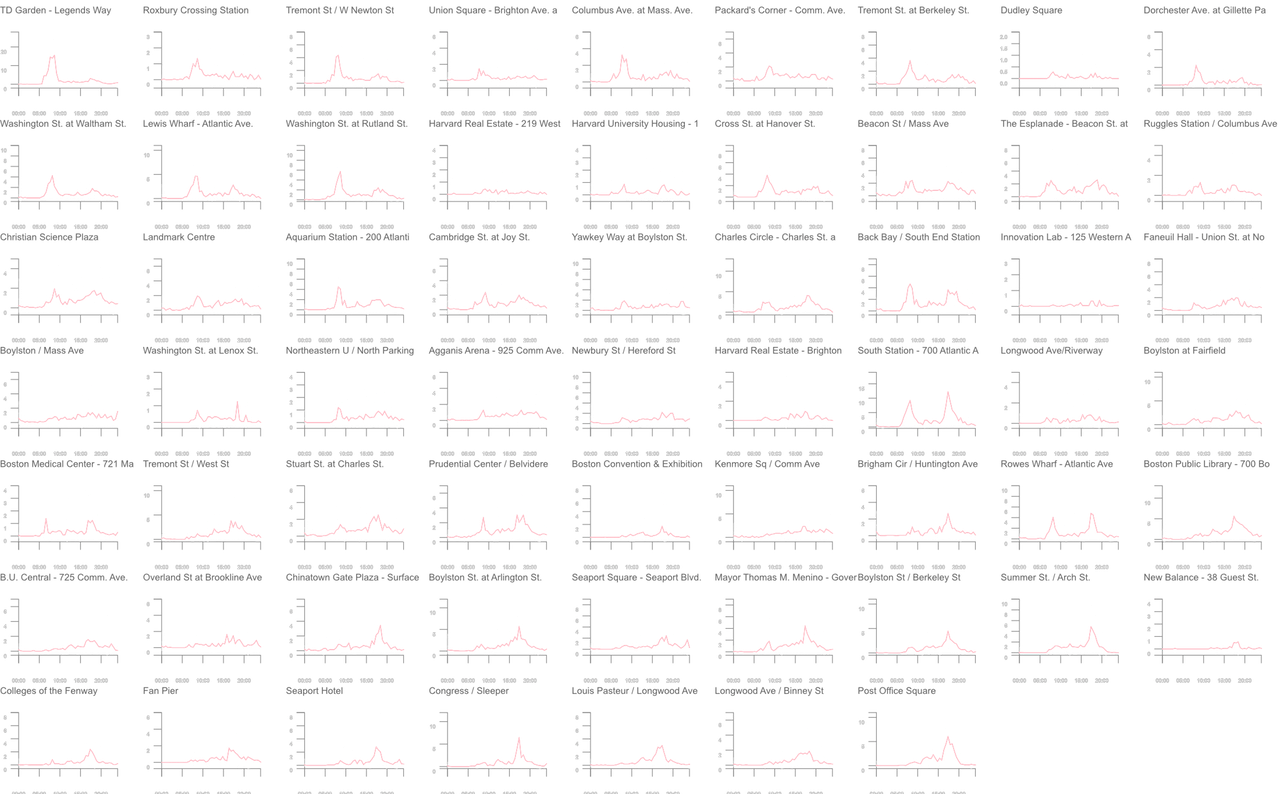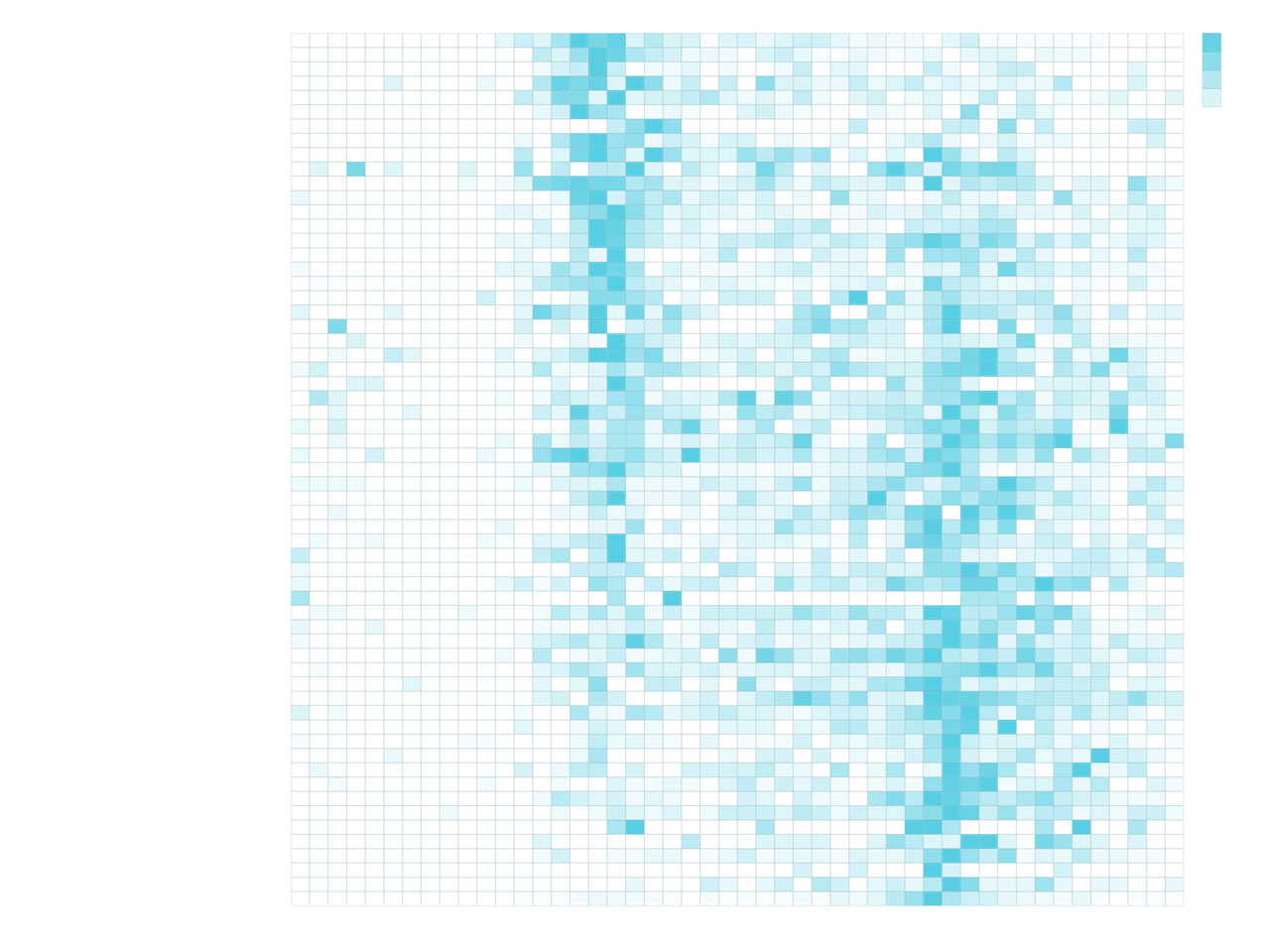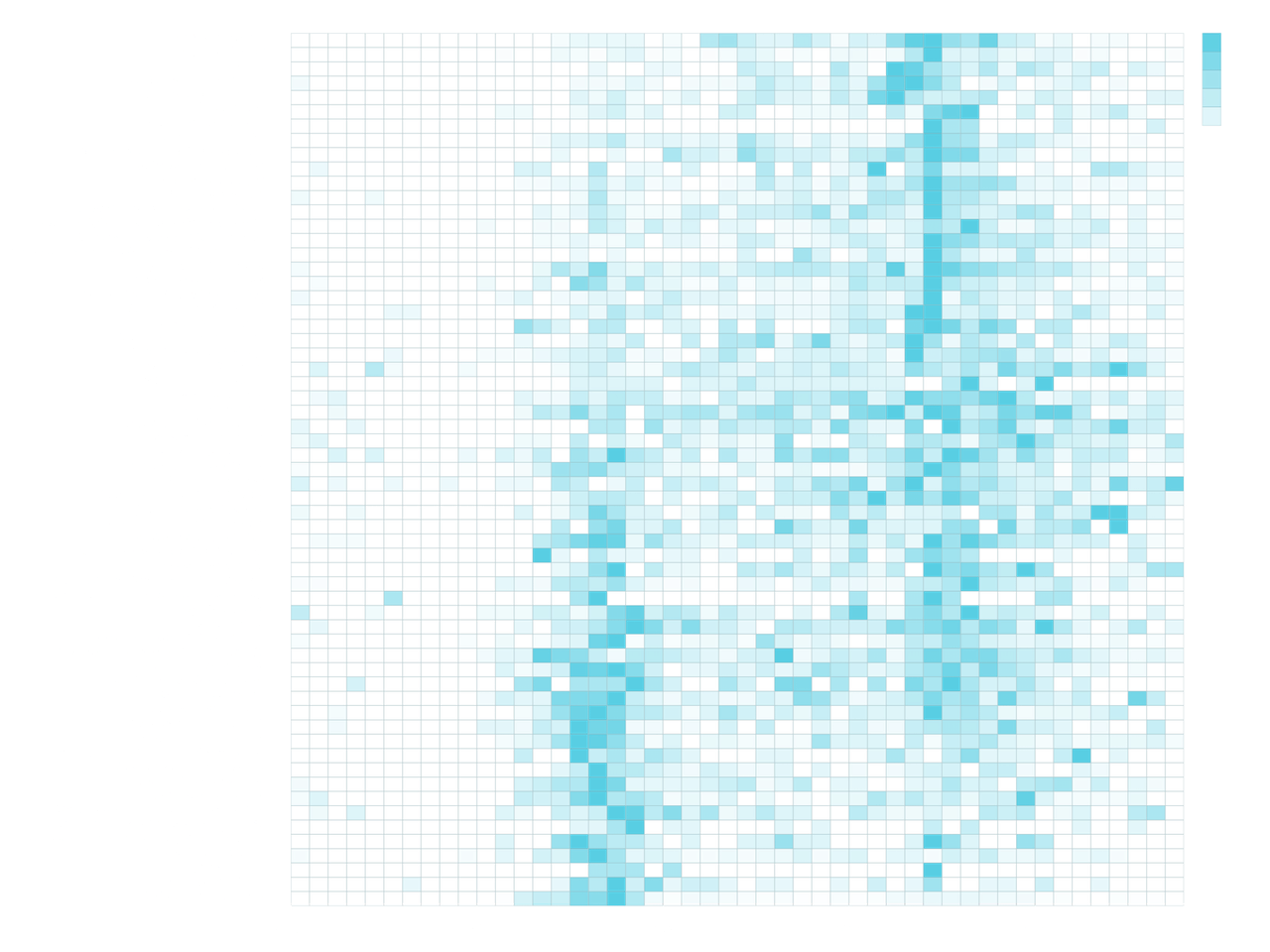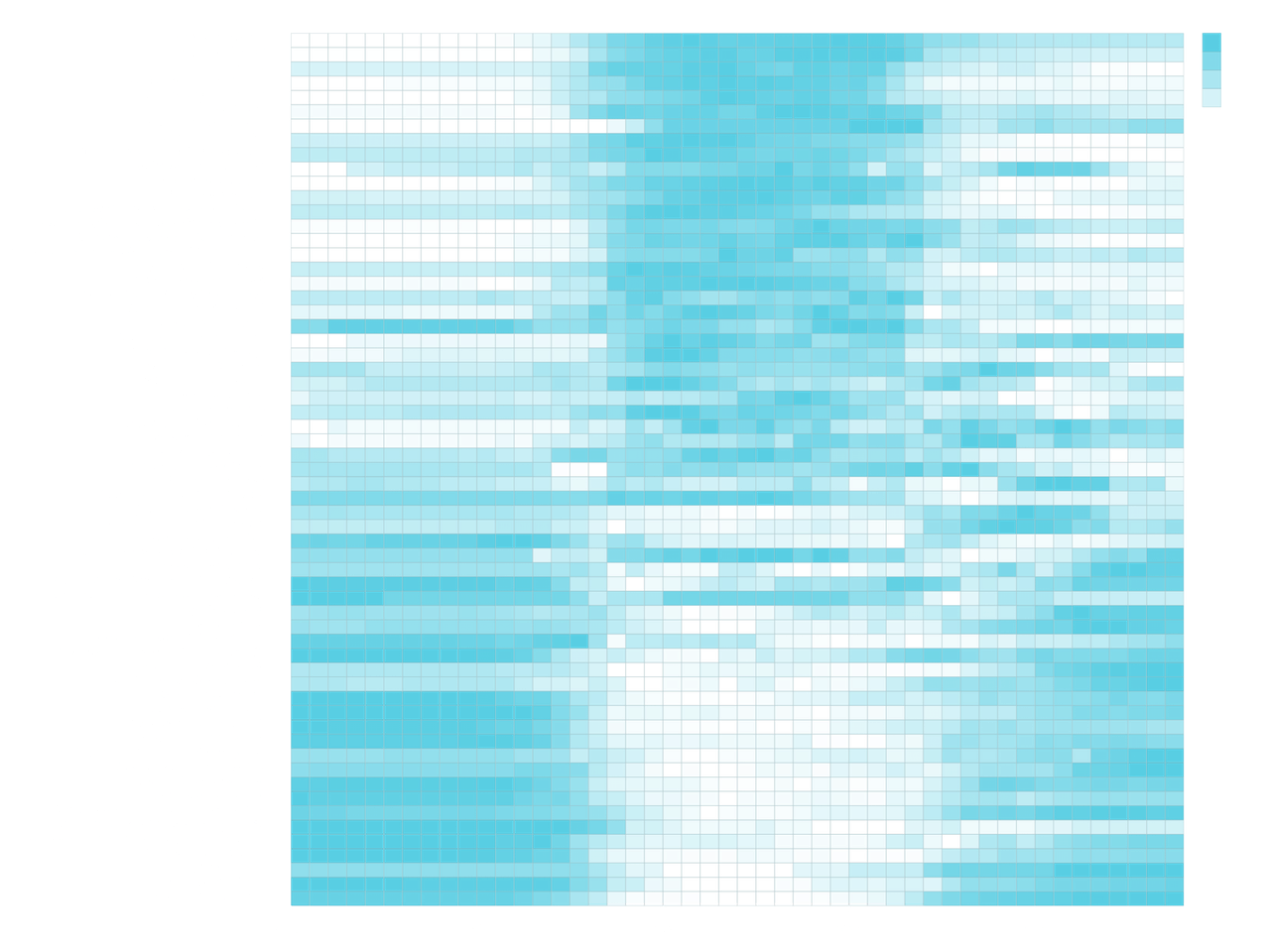Data
We used a dataset that Hubway released publicly in 2013 as part of the “Hubway Data Visualization Challenge”. The dataset includes 623,509 trips in CSV format that occurred in Hubway from July 28, 2011 till October 1, 2012. In this study, we focused on the month of June 2012 using Tuesday, the 19th, as a reference day. During this month, Hubway had 61 active stations, it had an average active stock of bikes in circulation of 550 bikes. Each entry in the trip dataset consists of 13 comma separated values: id, status, duration, start_date, start_station, end_date, end_station, bike_nr, subscription_type, zip_code, birth_date, gender. Example:
288373,Closed,3052,2012-05-31 16:11:00,45,2012-05-31 17:02:00,63,B00613,Registered,2464,1980,Male
288374,Closed,221,2012-05-31 16:12:00,43,2012-05-31 16:16:00,40,B00161,Registered,2110,1946,Male
288375,Closed,1101,2012-05-31 16:12:00,64,2012-05-31 16:30:00,64,B00084,Registered,2210,1988,Male
A time lapse over 24hrs reveals a palindromic tidal pattern at inventory stocks. However, this way of visualization is insufficient to understand the extent of the regularity of the pattern.

